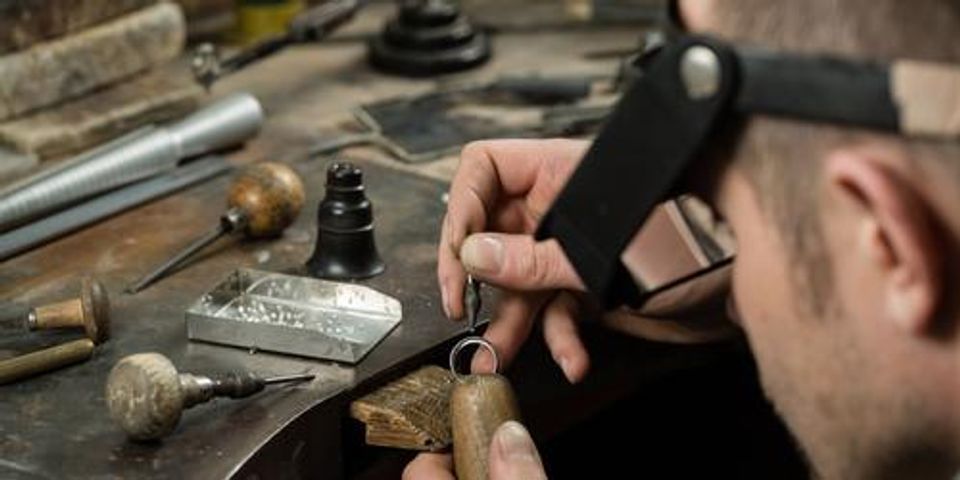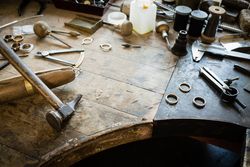8 Steps of Start to Finish Jewelry Manufacturing

Making jewelry is a multi-step process that requires experience and keen attention to detail to create beautiful, quality pieces that will stand the test of time. If you’re interested in commissioning a custom engagement ring or starting your own necklace line, here are the steps a jewelry manufacturer will go through to bring your vision to fruition.
8 Steps Taken by Jewelry Manufacturers to Create New Products
1. Computer-Aided Design
 Before precious metals and gemstones come into the picture, you’ll work with a jewelry manufacturer to hone in on a design. They will create a digital layout using a computer-aided design (CAD) drawing for your approval.
Before precious metals and gemstones come into the picture, you’ll work with a jewelry manufacturer to hone in on a design. They will create a digital layout using a computer-aided design (CAD) drawing for your approval.
2. Wax Printing or Carving/Sculpting
Once you’ve approved of the digital CAD rendering, the craftsman will create a 3-D version via 3-D printing wax to continue the process. If your model is not complex, it does not require CAD Designing and 3-D Printing; it may also be created via wax carving/ sculpting, or jeweler’s assembly on the bench.
3. Mold Making
With the model as a template, a jewelry manufacturer will create a mold that can be utilized for reproduction. Most molds are composed of silicon or vulcanized rubber for longevity and to ensure each piece is a perfect replica. The silicon rubber has the least amount of shrinkage, around 1% total from the original.
4. Jewelry Casting
Once the mold is finalized, jewelry casting can begin. Using a feeding tube called a sprue, wax is injected into the mold. Waxes are cleaned, inspected, and mounted onto a vertical rod make of wax, to make what looks like a jewelry tree. The wax tree is placed into a cylinder, filled with liquid plaster which will dry and act as cement- a new mold. The cylinder is placed into the kiln, where the wax completely melts away. Finally, liquid metal is poured into the plaster mold, completing the jewelry casting process.
5. Sprue Removal
After the liquid metal cools, the plaster mold is opened, and the jewelry tree is removed. The goal is to then remove the sprue so that there aren’t any signs of the excess metal which fed and filled up your jewelry.
6. Assembly & Stone Setting
If you’re designing a necklace with a clasp or earrings with unique closures, the jeweler will begin soldering rings and assembling rivets as part of the jewelry assembly process. Once the metal components are joined, stones can be placed in settings or mountings.
7. Polish
To give your item a smooth and shiny finish, it will be hand-polished according to your preferences. Light buff, matte or brushed polished, and shiny high polished are the most popular options.
8. E-Coating
Finally, your jewelry can go through the process of electroplating (Gold and Rhodium plating), a process where an additional layer of precious metal is electrically added to the surface of the design. This extra coating can prevent tarnishing and scratching, and add precious metal value to the surface of your design.
Frank Billanti Casting Co, based in the heart of New York City, is a one-stop shop for jewelry production. With over 45 years of experience as a jewelry manufacturer, you can count on these professionals to design and deliver precious heirloom pieces in gold, platinum, silver, brass, or bronze. Call them today at (212) 221-0440 for a free quote or visit them online to understand their additional services, from forging small metal statues to casting belt buckles and ornaments.
About the Business
Have a question? Ask the experts!
Send your question

